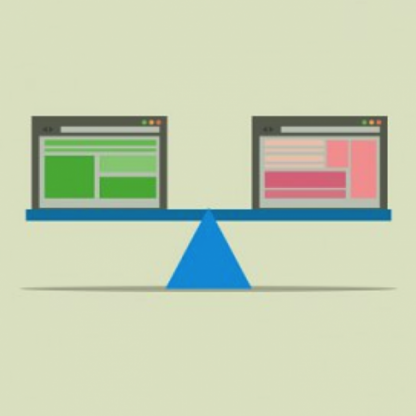
The Ins and Outs of A/B Testing
When you’ve got a full backlog of projects, a jam-packed marketing calendar, and a long roadmap of 3rd party integrations planned for your eCommerce website, the thought of adding testing to your strategy can seem overkill.
Thankfully, A/B testing is not as big of an undertaking as it may seem. Choosing the right tests and tools helps answer questions your team has on the back burner and amplifies the promotional impact of new on-site experiences.
With a traffic acquisition strategy and a busy customer base, testing on-site experiences will yield actionable results. So, when is the best time to get started?
Before a New Implementation Project
Whether you’re just beginning to consider updating your site, or you’ve already signed with a platform and implementation partner, the months leading up to launch produce productive ideas and head scratching questions around user experience. Incorporating 6-12 months of rigorous A/B testing before going into a redesign generates a “UX playbook” customized to your business and customers. From navigation to customer response, A/B testing helps clarify pain points and strengths going into a redesign.
In addition to A/B testing, customer surveys also provide telling insight into how customers respond to web experiences. If time and foresight allow you to begin gathering insights and data from real customers, you can begin the website redesign with a significant head start, feeling confident that you know what your customers will respond positively to.
Post Site Launch
Launching a new website is a huge accomplishment. It’s a major milestone for any company and looks to add growth in most every aspect of the business.
As nice as it is to launch a new site, we all know that a lot more work is needed to optimize the site and drive momentum. Odds are, the redesign process raised a lot of questions about the best way to craft the user experience for your customers. Once things are up and running smoothly, A/B testing is a great way to answer those questions. It’s also likely that your new website will provide enhanced technical capabilities, so anything that you couldn’t test before due to technical limitations is now back on the table.
It’s likely that a new website will provide enhanced technical capabilities, so anything that you couldn’t test before due to technical limitations is now back on the table. This is why it’s important to keep track of any questions or ideas that may have come up along the way during the implementation. Validating your design choices, and finding ways to tweak and optimize the experience will not only create a better customer experience but will ensure conversion grows according to plan when launching a new site.
From Valentines to visitors, A/B testing is a smart way to optimize experiencesWhat Do I Need to Get Started?
A/B testing can be impactful for businesses of all sizes and maturity levels; however, a site with high traffic volumes and consistent conversions will see statistically significant results more quickly.
If you’re receiving at least 500k monthly unique visitors and have a conversion rate of around 1%, you can implement a relatively robust A/B testing program by running 2-3 tests per month, and generate confident results in a matter of weeks. The more traffic you have coming to your site, the faster you can reach sample size thresholds and get consistent results.
More traffic also allows you to run more tests at the same time, and to begin targeting and segmenting traffic to optimize your experiences. After you’ve spent time crafting a traffic acquisition strategy and building a strong customer base, testing the on-site experience will yield actionable results.
If you don’t feel like you get enough traffic to invest in an A/B testing tool, don’t worry! There are plenty of free or low-cost options that simplify the testing process. Furthermore, it is critical to devote human resources to hypothesizing, implementing, and analyzing test results.
Lack of resources can be a barrier to many companies that would like to try A/B testing. That’s where a testing and optimization partner can become a great asset. From selecting the best testing tools for your needs to implementing and monitoring tests on a regular basis, a relationship with a testing and optimization partner can provide significant value without the need for dedicated resources.
